Dive into the world of **boosting heat pump performance** by mastering the art of moving warmth around. Imagine turning up the cozy in your home without breaking the bank. This adventure suits anyone eager to slash their heating bill and treat the planet kindly. Packed with nifty tricks and lesser-known facts, you’ll find out how to make your heat pump work like a charm. Slicing through technical jargon, let’s unveil the secrets behind cranking up the heat efficiently. You’ll leave equipped with the know-how to keep your space toasty for less. Stick around, and let’s heat things up with knowledge that pays off!
In this article, we will delve into the basics of thermal energy transfer, understand heat pump efficiency, and discuss the crucial role of thermal energy transfer in optimizing heat pump performance.
By examining various factors affecting thermal energy transfer and exploring advanced techniques, we aim to help you maximize heat pump efficiency and serve your needs effectively.
Key Takeaways
- Understanding the basics of thermal energy transfer is crucial for optimizing heat pump performance.
- Efficient thermal energy transfer methods in heat pumps reduce energy consumption and promote sustainability.
- Strategies for enhancing thermal energy transfer include fluid flow optimization, proper insulation placement, and well-designed heat exchangers.
- Advanced techniques for thermal energy transfer in heat pumps include the use of nanofluids, enhanced thermal conductivity, and intelligent control systems.
The Basics of Thermal Energy Transfer
First, let’s understand the three basic methods of thermal energy transfer.

Heat transfer mechanisms play a vital role in heat pump operation.
The first method is conduction, which involves the transfer of heat through direct contact between materials. In this process, heat flows from a higher temperature region to a lower temperature region.
The second method is convection, where heat is transferred through the movement of fluids such as air or water. This can occur through natural convection, driven by temperature differences, or forced convection, aided by fans or pumps.
The third method is radiation, which involves the transfer of heat through electromagnetic waves. Unlike conduction and convection, radiation can transfer heat even in a vacuum.
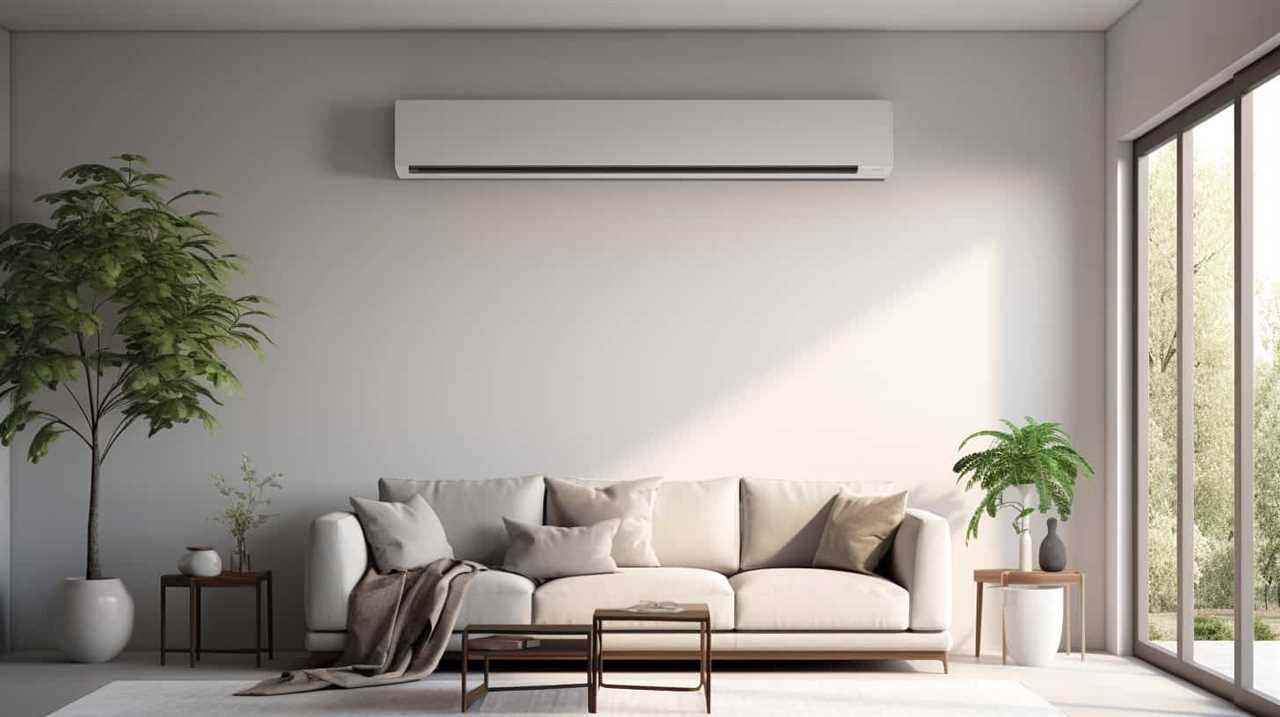
Understanding these heat transfer mechanisms is crucial in optimizing heat pump performance and ensuring efficient energy utilization.
Understanding Heat Pump Efficiency
To truly comprehend heat pump efficiency, we must understand the relationship between the energy input and the desired thermal output. Heat pump efficiency refers to the ability of a heat pump system to convert the energy input into useful thermal energy output effectively.
There are various strategies for increasing efficiency, such as optimizing the design and size of the heat pump, using high-efficiency components, and implementing advanced control algorithms.
Proper maintenance also plays a crucial role in maximizing heat pump efficiency. Regular inspections, cleaning, and servicing of the heat pump system can prevent energy wastage and ensure that the system operates at its peak performance.

By employing these strategies and benefiting from proper maintenance, heat pump efficiency can be significantly improved.
With this understanding of heat pump efficiency, we can now delve into the role of thermal energy transfer in heat pump performance.
The Role of Thermal Energy Transfer in Heat Pump Performance
Efficient heat transfer methods play a crucial role in the overall performance of a heat pump system. By effectively transferring thermal energy, heat pumps can achieve higher levels of efficiency and reduce energy consumption.
Enhancing heat pump efficiency through optimized thermal energy transfer is essential for maximizing the system’s performance and minimizing its environmental impact.
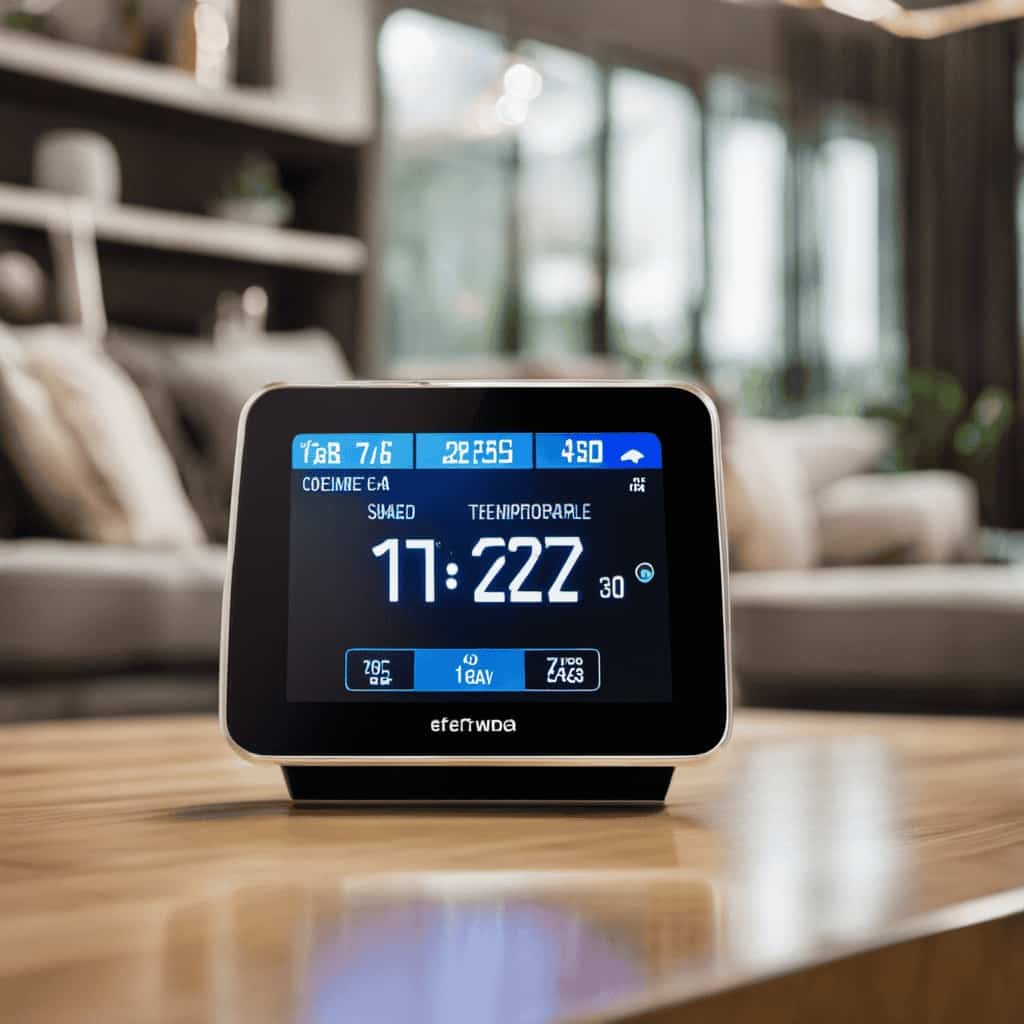
Efficient Heat Transfer Methods
One of the key factors in optimizing heat pump performance is implementing efficient heat transfer methods. By using efficient heat transfer materials and improving heat pump design, we can enhance the overall efficiency and effectiveness of heat transfer within the system.
Here are four important methods for achieving efficient heat transfer:
-
Enhanced Surface Area: Increasing the surface area of heat transfer surfaces allows for more contact between the working fluid and the heat source or sink, resulting in improved heat transfer rates.
-
Enhanced Fluid Flow: Utilizing techniques such as turbulence promoters or special flow patterns can enhance fluid flow, promoting better heat transfer by reducing boundary layer thickness and increasing convective heat transfer.

-
Improved Insulation: Proper insulation minimizes heat loss, ensuring that the heat transfer process remains efficient and effective.
-
Optimized Heat Exchanger Design: Careful design of heat exchangers, including the choice of materials, size, and configuration, can significantly improve heat transfer efficiency.
Implementing these efficient heat transfer methods can lead to higher heat pump performance, reducing energy consumption and improving overall system efficiency.
Impact on Energy Consumption
Our study reveals that implementing efficient thermal energy transfer methods in heat pumps can have a significant impact on our energy consumption. By employing strategies for reducing energy consumption through thermal energy transfer, heat pumps can operate more effectively and efficiently, resulting in lower energy usage.
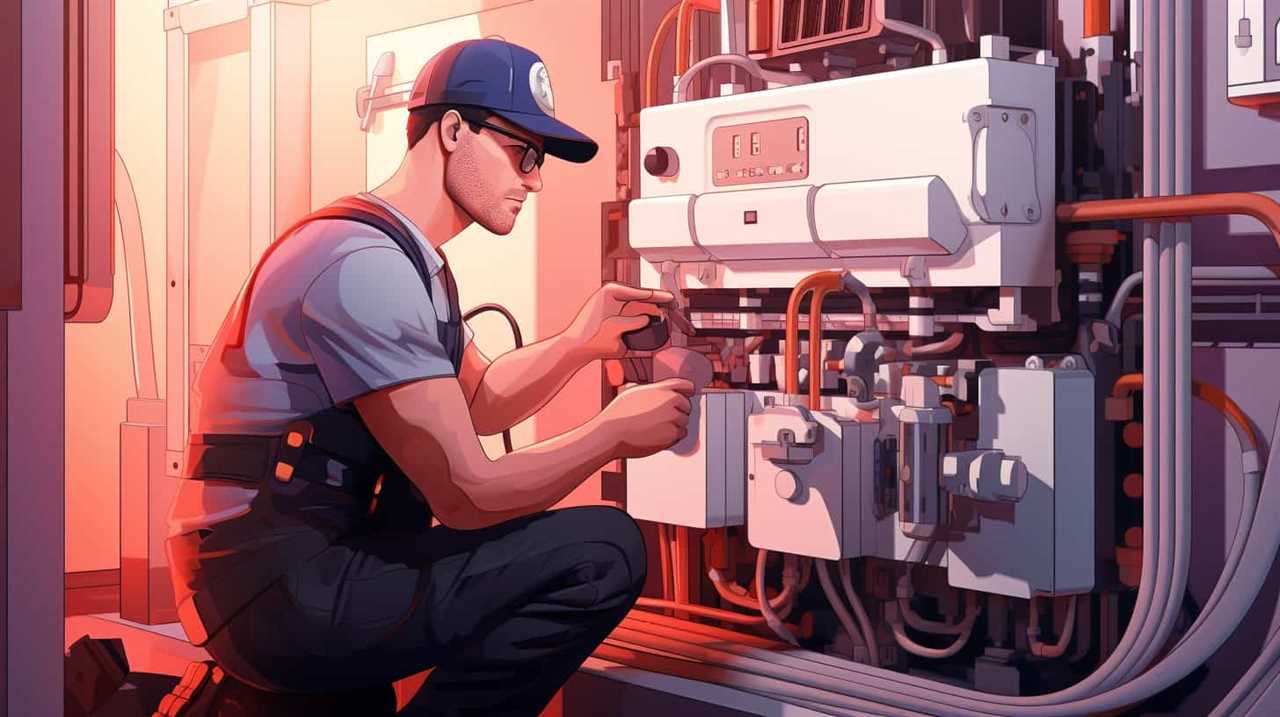
The role of thermal energy transfer in heat pump performance is especially crucial when considering the impact of weather conditions on energy consumption. During extreme weather conditions, such as hot summers or cold winters, the demand for heating and cooling increases significantly, leading to higher energy consumption. However, with efficient thermal energy transfer methods in place, heat pumps can effectively manage these demands, reducing overall energy consumption and promoting sustainability.
With this understanding, we can now explore ways to further enhance heat pump efficiency and maximize energy savings.
Enhancing Heat Pump Efficiency
By implementing specific thermal energy transfer techniques, we can enhance heat pump efficiency by up to 20%. Optimizing energy transfer is crucial in improving heat pump performance. Here are four key strategies to enhance heat pump efficiency:
-
Heat exchangers: Incorporating high-efficiency heat exchangers can maximize heat transfer between the refrigerant and the surrounding environment. This reduces energy waste and improves overall system performance.
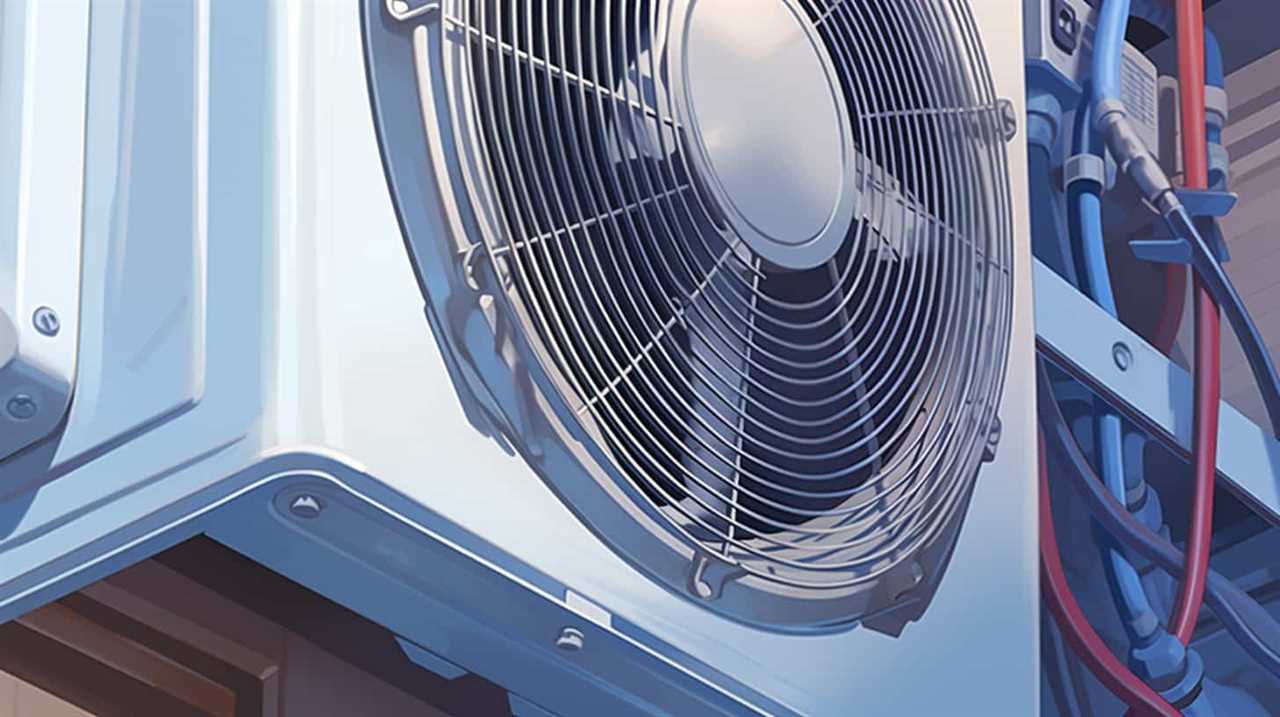
-
Insulation: Proper insulation minimizes heat loss during the transfer process, ensuring that the desired temperature is maintained efficiently.
-
Variable speed technology: Utilizing variable speed compressors and fans allows the heat pump to adjust its output according to the specific heating or cooling requirements, optimizing energy consumption.
-
Heat recovery systems: Implementing heat recovery systems can harness and reuse waste heat, further improving energy efficiency.
Factors Affecting Thermal Energy Transfer in Heat Pumps
To understand the factors influencing thermal energy transfer in heat pumps, we must consider the various components and their specific roles in the process. Two key factors that impact thermal energy transfer are fluid flow optimization and heat transfer analysis.
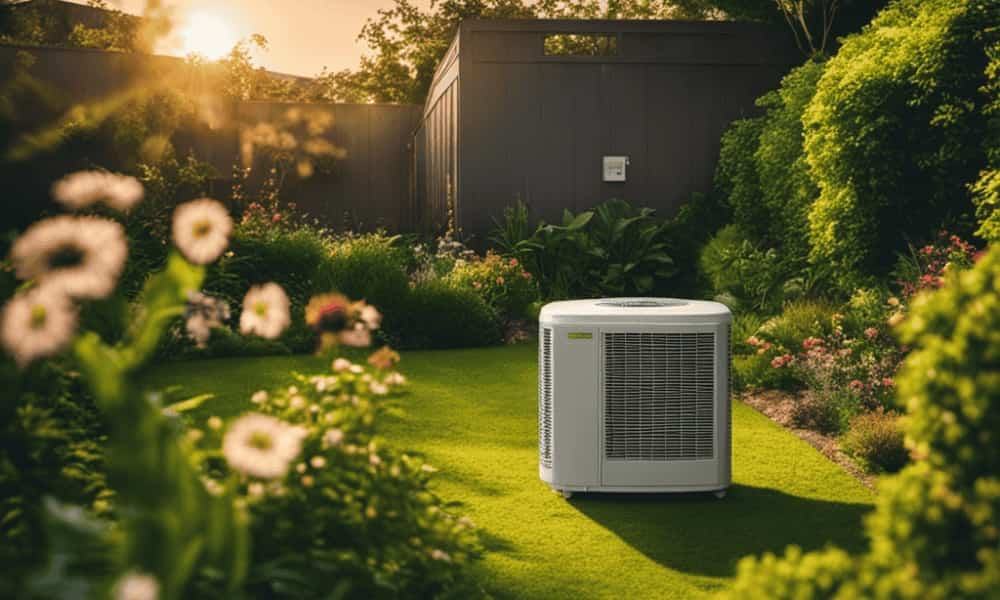
Fluid flow optimization involves designing the heat pump system in a way that maximizes the flow of the working fluid, minimizing any restrictions or inefficiencies. This can be achieved through careful selection of pipe sizes, pump capacities, and valve configurations.
Heat transfer analysis, on the other hand, focuses on understanding how heat is transferred between the working fluid and the surrounding environment. By analyzing factors such as temperature differentials, surface area, and thermal conductivity, we can identify areas for improvement and implement strategies to enhance heat transfer efficiency.
By considering these factors, we can enhance thermal energy transfer in heat pumps and improve overall system performance.
Next, let’s explore another important aspect of improving heat pump efficiency: enhancing thermal energy transfer through proper insulation.

Enhancing Thermal Energy Transfer Through Proper Insulation
One crucial step in enhancing thermal energy transfer is to ensure proper insulation for the heat pump system. Insulation materials play a significant role in minimizing heat loss and improving energy efficiency.
Here are four key factors to consider when selecting insulation materials for a heat pump system:
-
Thermal conductivity: Choose materials with low thermal conductivity to minimize heat transfer through the insulation.
-
Thickness: Opt for insulation with an appropriate thickness to provide sufficient resistance to heat transfer.
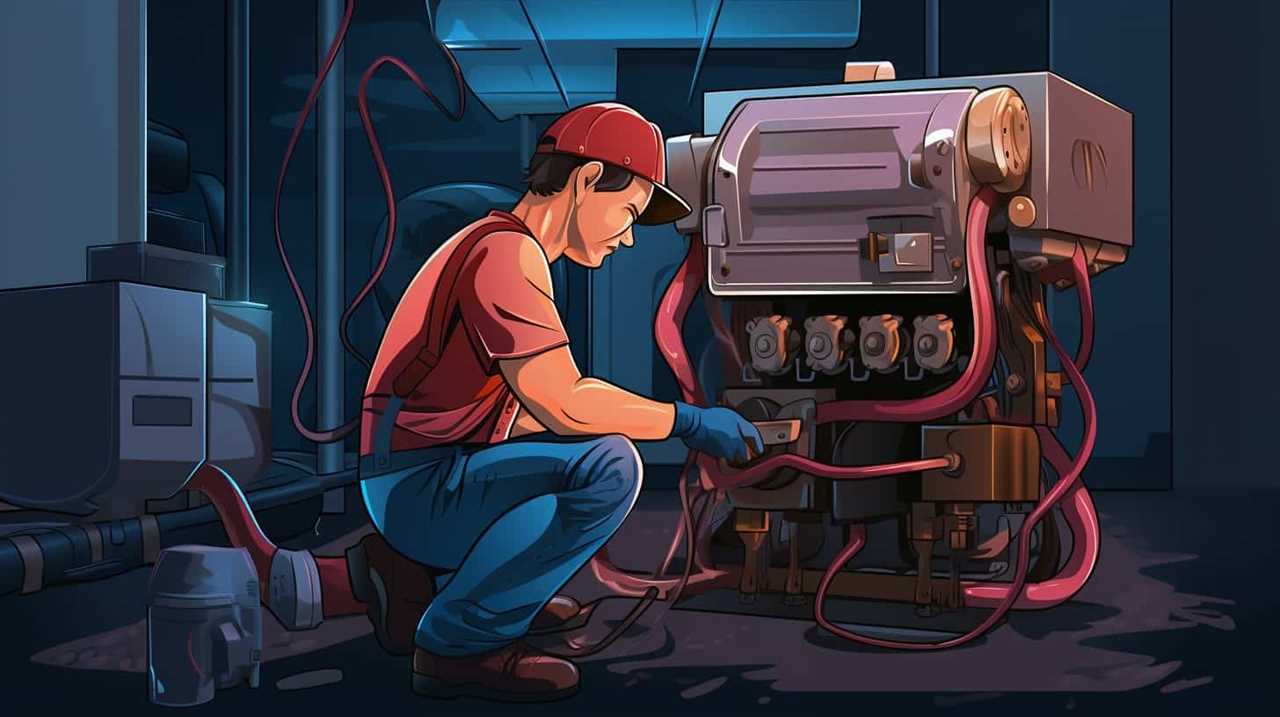
-
Moisture resistance: Select insulation materials that have good moisture resistance properties to prevent moisture buildup, which can degrade their thermal performance.
-
Insulation placement: Properly install insulation to cover all exposed areas of the heat pump system, including pipes, ducts, and the unit itself, to minimize heat loss.
Strategies for Optimizing Heat Pump Performance Through Thermal Energy Transfer
Maximizing heat pump performance can be achieved by implementing effective strategies for optimizing thermal energy transfer.
One such strategy is ensuring proper airflow within the heat pump system. By maintaining a consistent and unrestricted flow of air, heat transfer efficiency can be maximized. Regular cleaning and maintenance of the heat pump’s air filters is crucial in preventing clogs and blockages that can impede airflow.
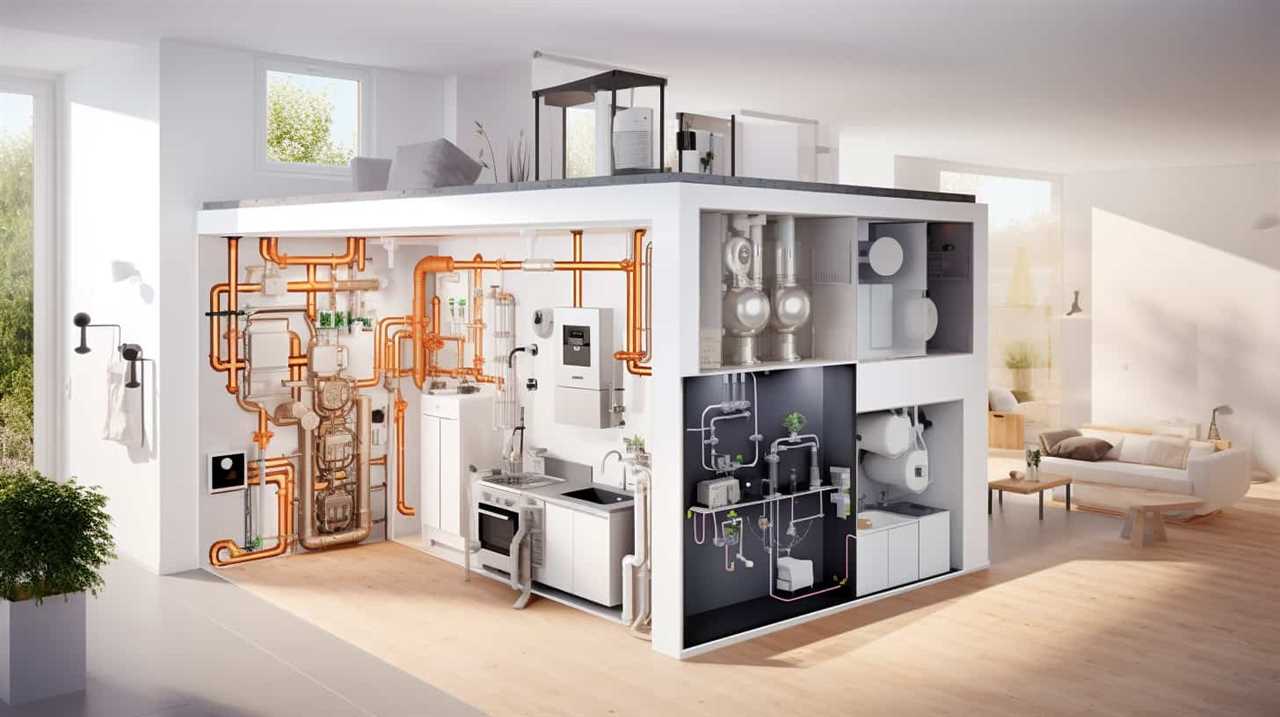
Additionally, proper insulation of the heat pump system can greatly enhance heat transfer efficiency. Insulating the ductwork, pipes, and equipment can minimize heat loss and improve overall energy efficiency.
Another strategy is to consider the location of the heat pump system. Placing it in a well-insulated area, away from direct sunlight and any obstructions, can further optimize heat transfer.
Importance of Proper Fluid Flow for Efficient Thermal Energy Transfer
We can improve the efficiency of thermal energy transfer by ensuring a consistent and unrestricted flow of fluid within the heat pump system. Proper fluid flow optimization is crucial for maximizing the performance of a heat pump and achieving higher levels of energy efficiency.
Here are four key reasons why proper fluid flow is important for efficient thermal energy transfer:
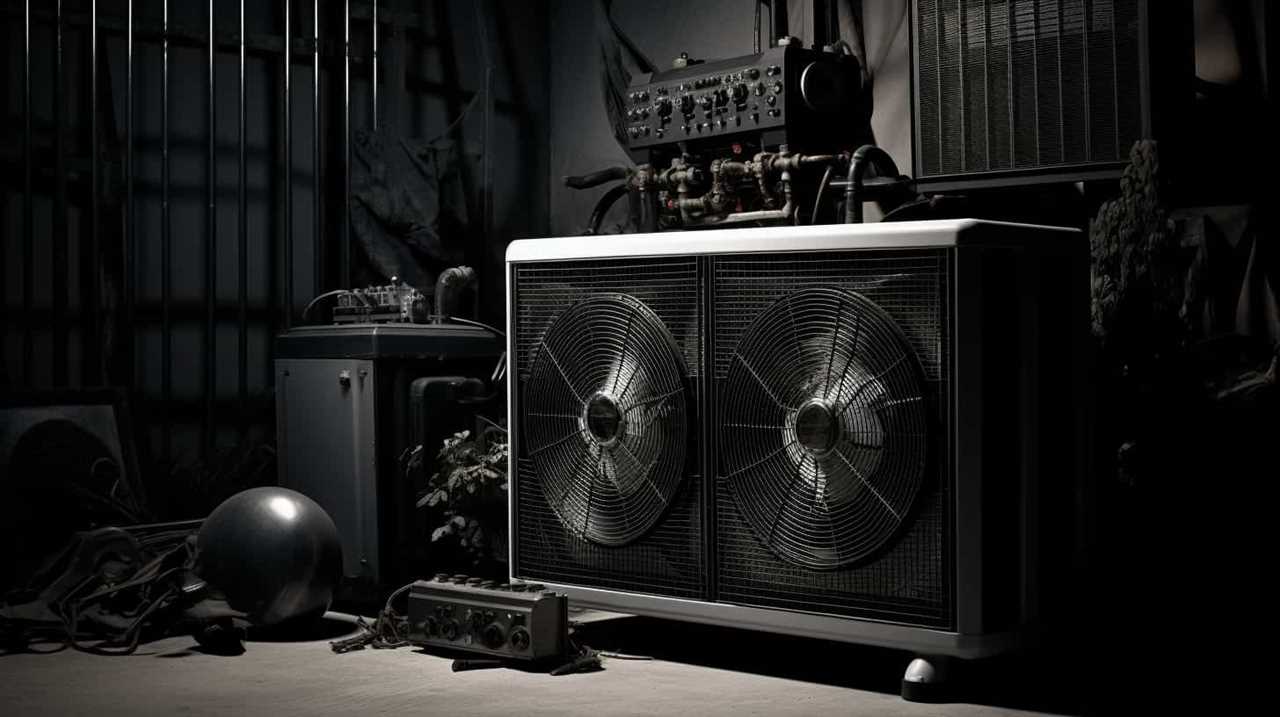
-
Enhanced heat transfer: By maintaining a steady and unimpeded flow of fluid, we can ensure that heat is effectively transferred between the heat source and the heat sink, maximizing the efficiency of the system.
-
Reduced pressure drop: Proper fluid flow minimizes pressure drop, which in turn reduces the energy required to circulate the fluid through the heat pump system, resulting in energy savings.
-
Prevention of fouling and corrosion: Consistent fluid flow helps to prevent the buildup of contaminants and corrosive substances, which can degrade the efficiency of the heat pump over time.
-
Improved reliability: Smooth fluid flow reduces the risk of system malfunctions and equipment failures, leading to increased reliability and reduced maintenance costs.

Heat Exchangers and Their Impact on Thermal Energy Transfer in Heat Pumps
To optimize thermal energy transfer in heat pumps, it’s essential to understand the impact of heat exchangers on the system’s efficiency. Heat exchangers play a crucial role in facilitating the transfer of heat between the working fluid and the external environment.
The design of the heat exchanger greatly affects the overall performance of the heat pump, particularly its Coefficient of Performance (COP). The COP is a measure of the heat pump’s efficiency in providing heating or cooling. A well-designed heat exchanger maximizes the heat transfer rate, resulting in a higher COP.
Factors such as the choice of materials, surface area, and flow patterns within the heat exchanger can significantly influence its effectiveness. By optimizing heat exchanger design, heat pumps can achieve higher levels of thermal energy transfer.
Now, let’s explore advanced techniques for further enhancing thermal energy transfer in heat pumps.

Exploring Advanced Techniques for Thermal Energy Transfer in Heat Pumps
The article explores advanced techniques for enhancing thermal energy transfer in heat pumps. In order to improve the performance and efficiency of heat pumps, it’s essential to explore novel materials and innovative designs. Here are four techniques that can be employed:
-
Advanced Heat Exchanger Designs: By incorporating advanced heat exchanger designs, such as microchannel heat exchangers or plate heat exchangers, the heat transfer efficiency can be significantly improved. These designs provide enhanced surface area and optimized flow patterns, resulting in improved thermal performance.
-
Phase Change Materials: By utilizing phase change materials, which have the ability to store and release large amounts of thermal energy during phase transitions, heat pumps can achieve higher heat transfer rates. These materials can be integrated into heat exchangers to enhance the overall efficiency of the system.
-
Enhanced Heat Transfer Surfaces: By incorporating specially designed surfaces with enhanced heat transfer properties, heat pumps can achieve higher heat transfer rates. These surfaces can be engineered to have increased surface area, improved wettability, or enhanced thermal conductivity, resulting in improved thermal performance.
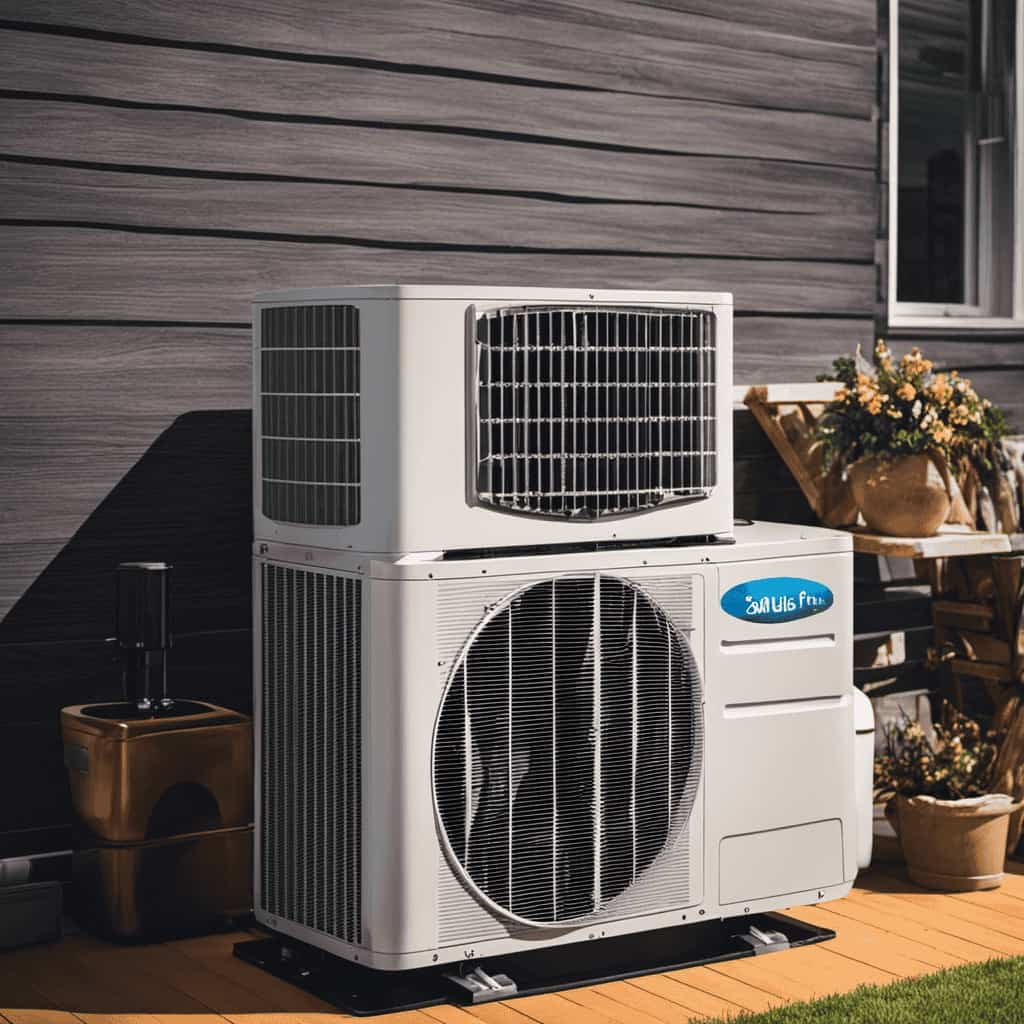
-
Intelligent Control Systems: By implementing intelligent control systems, heat pumps can optimize the thermal energy transfer process. These systems utilize advanced algorithms and sensors to monitor and adjust various parameters, such as flow rate, temperature, and pressure, in real-time, ensuring optimal heat transfer efficiency.
Maximizing Heat Pump Efficiency Through Innovative Thermal Energy Transfer Technologies
To maximize heat pump efficiency, we can explore the use of advanced heat exchangers, nanofluids, and enhanced thermal conductivity.
Advanced heat exchangers, such as microchannel and plate heat exchangers, offer improved heat transfer rates and reduced pressure drops.
Nanofluids, which are suspensions of nanoparticles in a base fluid, have shown promise in enhancing heat transfer performance due to their unique properties.
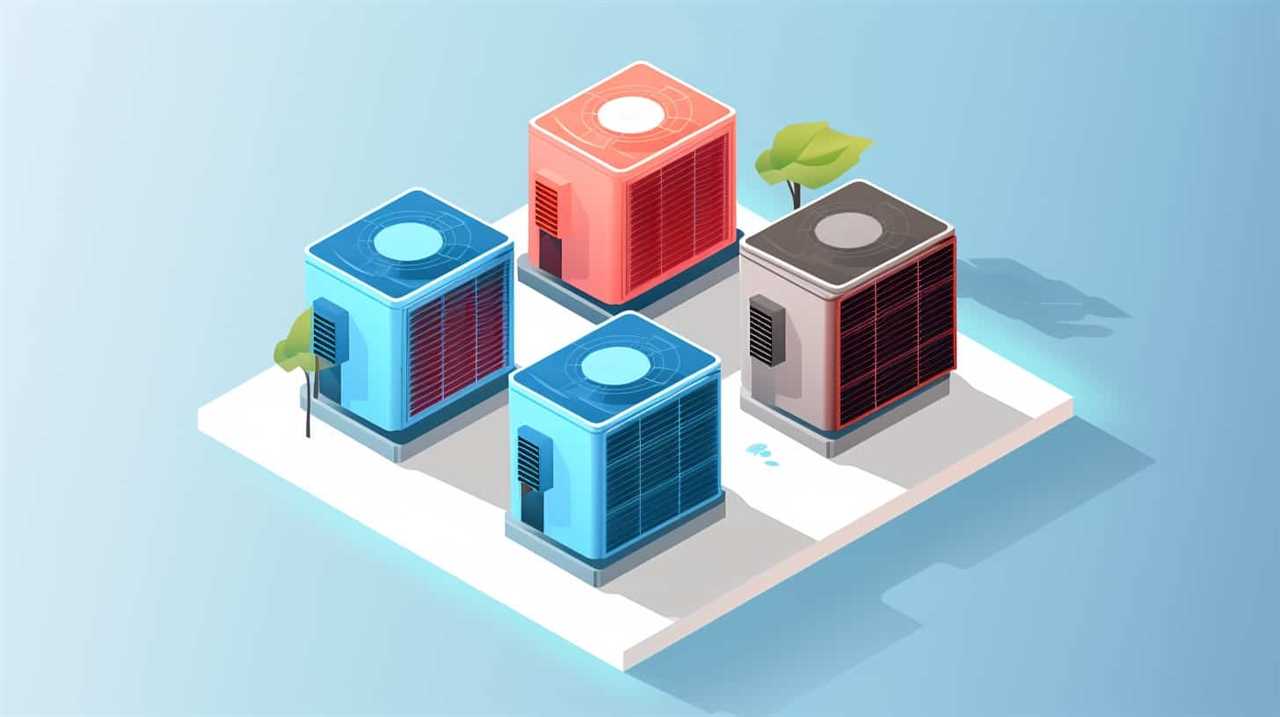
Additionally, enhancing the thermal conductivity of materials used in heat pump components can further improve overall efficiency by reducing heat losses and increasing heat transfer rates.
Advanced Heat Exchangers
Our research focuses on utilizing advanced heat exchangers to maximize the efficiency of heat pumps through innovative thermal energy transfer technologies. Advanced heat exchangers play a crucial role in improving the performance of heat pumps by enhancing heat conduction and optimizing heat exchanger design.
Here are four key aspects of advanced heat exchangers:
-
Enhanced heat conduction: Advanced heat exchangers employ materials with high thermal conductivity to facilitate efficient heat transfer. This allows for faster and more effective exchange of thermal energy between the heat pump and the surrounding environment.
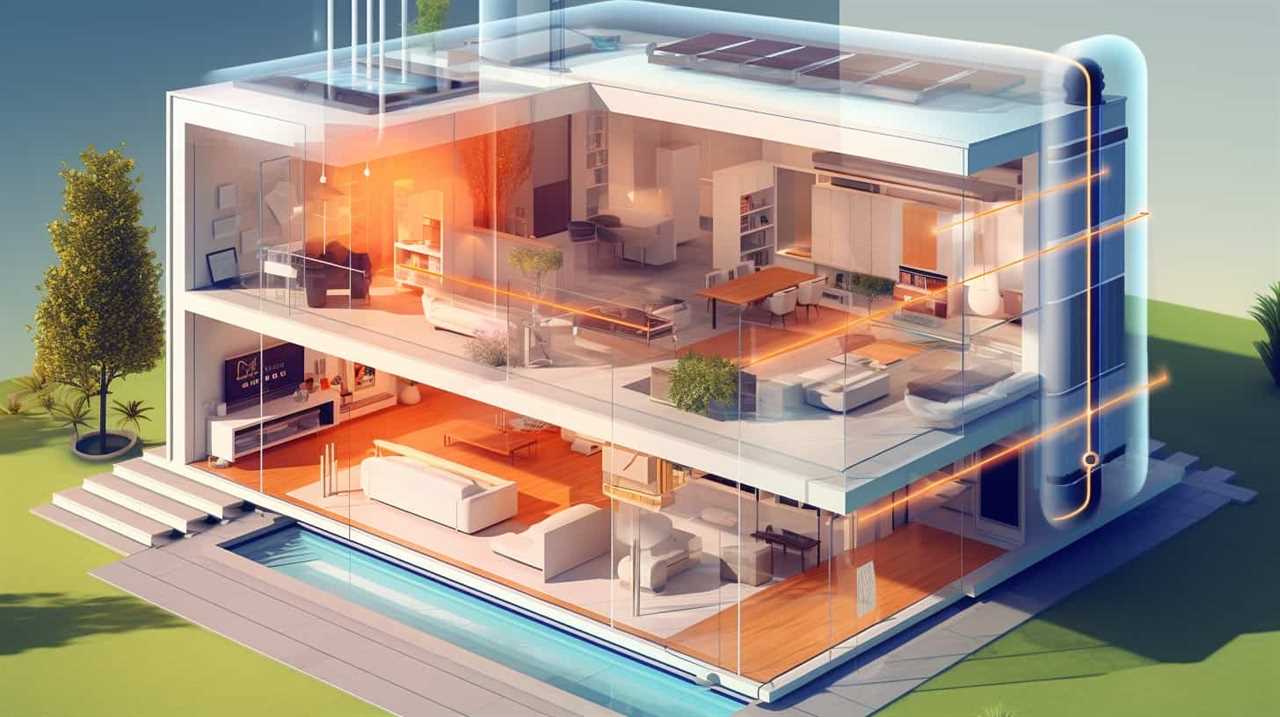
-
Compact design: Advanced heat exchangers are designed to have a compact layout, reducing the overall size and volume of the heat pump system. This not only saves space but also improves the system’s efficiency by minimizing heat losses and pressure drops.
-
Counterflow arrangement: Heat exchangers with a counterflow arrangement enable a more efficient transfer of heat by maximizing the temperature difference between the hot and cold fluids. This results in improved overall heat pump performance.
-
Surface enhancement techniques: Advanced heat exchangers incorporate surface enhancement techniques such as finning or corrugation to increase the surface area available for heat transfer. This enhances the heat transfer rate and improves the efficiency of the heat pump.
Nanofluids for Better Performance
We have discovered that incorporating nanofluids into heat pump systems can significantly enhance their performance and maximize heat pump efficiency through innovative thermal energy transfer technologies. Nanofluids are engineered fluids that consist of nanoparticles dispersed in a base fluid, such as water or oil. These nanoparticles, with their unique properties, can greatly improve heat transfer rates compared to traditional heat transfer fluids.
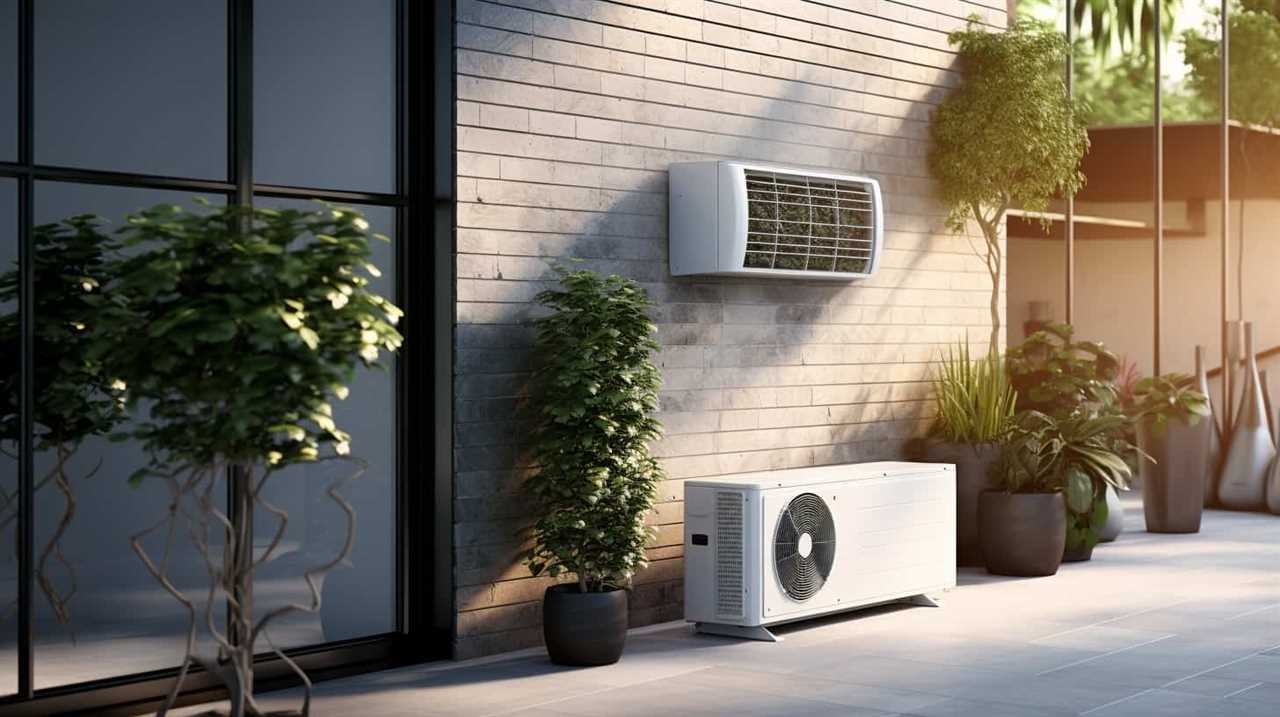
Table: Nanofluid Properties and Applications in Refrigeration
| Nanofluid Property | Applications in Refrigeration |
|---|---|
| High thermal conductivity | Improved heat transfer in heat exchangers |
| Enhanced convective heat transfer | Increased heat dissipation in refrigeration systems |
| Increased boiling and condensation heat transfer coefficients | More efficient heat transfer during phase change processes |
| Improved stability and dispersion | Long-term reliability and performance in heat pump systems |
Enhanced Thermal Conductivity
By incorporating innovative thermal energy transfer technologies, we can enhance the thermal conductivity of heat pumps and maximize their efficiency. Here are four ways to achieve this:
-
Utilize new materials: Researchers are constantly developing materials with high thermal conductivity, such as graphene and carbon nanotubes. By incorporating these materials into the heat pump design, we can improve heat transfer efficiency and maximize conductivity.
-
Implement advanced heat exchangers: Heat exchangers play a crucial role in transferring thermal energy between the heat pump and the surrounding environment. By using advanced heat exchanger designs, such as microchannel heat exchangers or plate heat exchangers, we can increase the surface area available for heat transfer, thereby enhancing thermal conductivity.

-
Optimize refrigerant properties: The choice of refrigerant can greatly impact the thermal conductivity of a heat pump. By selecting refrigerants with higher thermal conductivity and lower viscosity, we can maximize heat transfer efficiency and improve overall performance.
-
Enhance system insulation: Proper insulation is essential for minimizing heat loss in a heat pump system. By using high-quality insulation materials and reducing thermal bridging, we can minimize energy losses and improve the overall thermal conductivity of the system.
Case Studies: Successful Applications of Thermal Energy Transfer to Improve Heat Pump Performance
Several successful case studies demonstrate the effectiveness of thermal energy transfer in improving heat pump performance.
These case study examples provide real-world applications that showcase the benefits of utilizing thermal energy transfer techniques.

In one case study, a residential heat pump system was retrofitted with a thermal energy transfer device, resulting in a significant improvement in energy efficiency and overall performance.
Another case study involved the implementation of a thermal energy storage system in a commercial building, which resulted in reduced energy consumption and lower operating costs.
Additionally, a case study conducted on a geothermal heat pump system showed that incorporating thermal energy transfer techniques increased the system’s efficiency and reduced its reliance on auxiliary heating sources.
These successful applications highlight the practicality and effectiveness of thermal energy transfer in improving heat pump performance in various settings.

Frequently Asked Questions
What Are the Different Types of Heat Pumps?
There are two main types of heat pumps: geothermal heat pumps and air source heat pumps. Geothermal heat pumps utilize the constant temperature of the earth to transfer heat, while air source heat pumps extract heat from the air.
How Does the Size of a Heat Pump Affect Its Performance?
The size of a heat pump directly impacts its performance. Factors such as efficiency and energy consumption are influenced by the size of the heat pump. A larger heat pump can provide greater heating or cooling capacity.
What Are the Common Problems or Challenges in Thermal Energy Transfer in Heat Pumps?
Common challenges in thermal energy transfer in heat pumps include insufficient heat exchange surface area, low heat transfer coefficients, and suboptimal refrigerant flow rates. Efficiency improvements can be achieved through optimization of these factors.
How Can Weather Conditions Impact the Efficiency of Thermal Energy Transfer in Heat Pumps?
Weather conditions can significantly impact the efficiency of thermal energy transfer in heat pumps. By optimizing the system to adapt to varying temperatures, we can ensure optimal performance and enhance the overall efficiency of the heat pump.
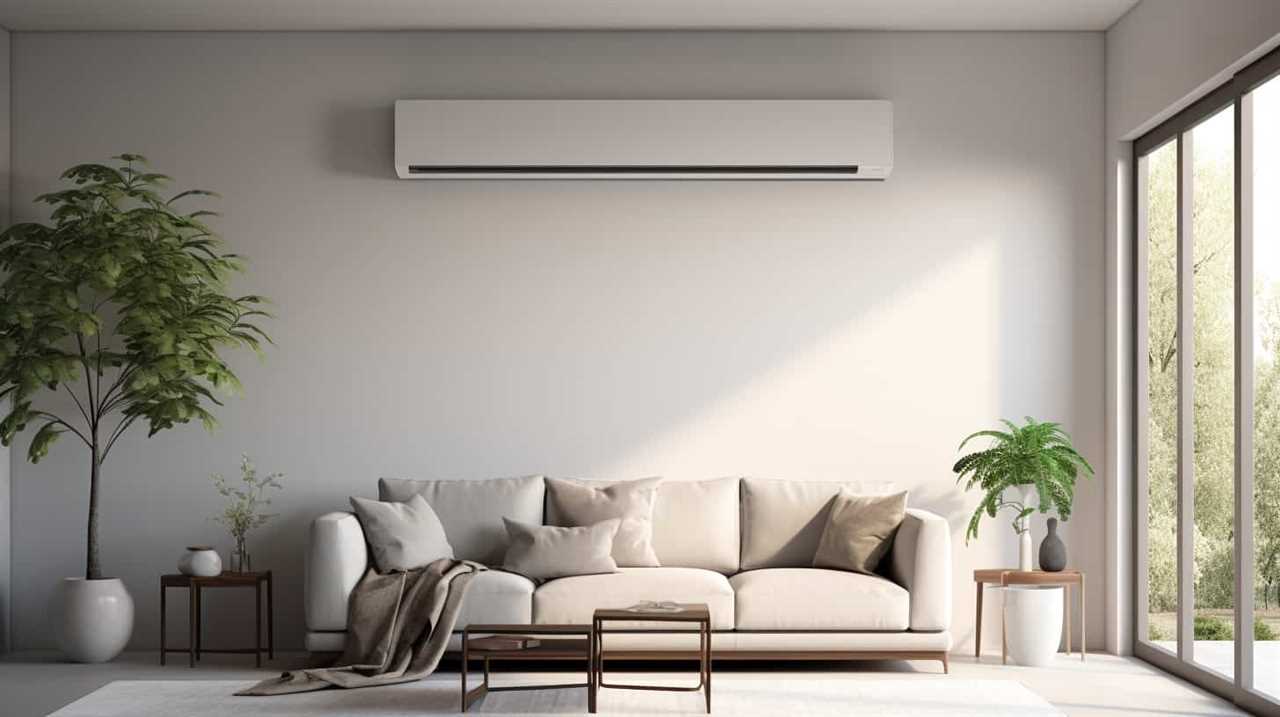
Are There Any Regulations or Standards for Thermal Energy Transfer in Heat Pumps?
Yes, there are regulations and standards for thermal energy transfer in heat pumps. These include testing methods for heat pump performance to ensure efficiency and reliability. Compliance with these regulations is necessary for safe and effective operation.
Conclusion
In conclusion, we’ve explored the importance of thermal energy transfer in heat pump performance and the various factors that can affect it.
While proper insulation and heat exchangers play a significant role in enhancing this transfer, advanced techniques and innovative technologies hold the key to maximizing heat pump efficiency.
It’s ironic that by focusing on the intricate details of thermal energy transfer, we can achieve greater complexity and depth in improving heat pump performance.










